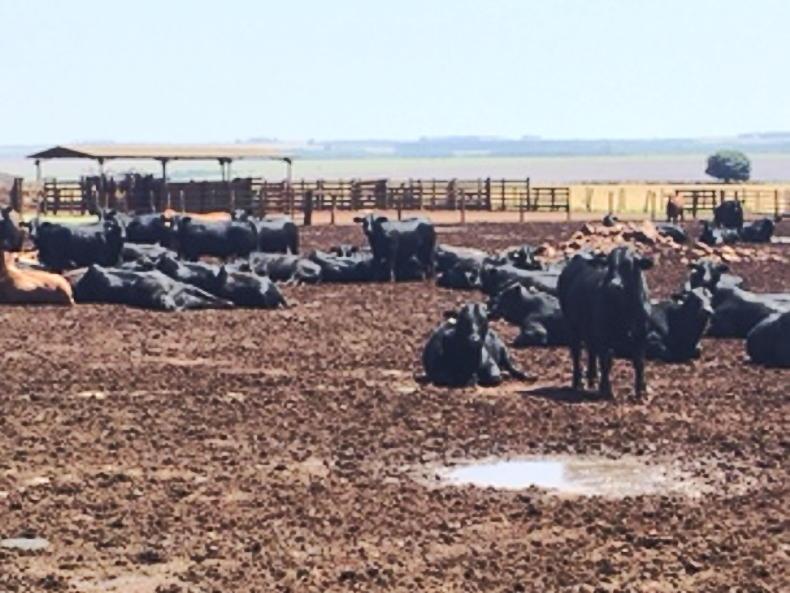Last week, over 10,000 cattle died in feedlots across southwest Kansas as intense heat and humidity hit the US Midwest.
The deaths are being attributed to a severe heat index crisis caused by high humidity, high temperatures and low wind speeds.
Like much of the US Midwest, southwest Kansas has been in a significant drought event for the past year.
Weather events
Months of high temperatures and no rain created ‘dry-heat’ conditions, with little to no humidity. Cattle generally perform well in these conditions and become acclimatised to the weather consistency.
With little humidity in the air, nighttime temperatures typically drop sufficiently low to cool cattle adequately, regardless of high daytime temperatures.
Kansas’s natural open plains landscape also allows for consistent winds to blow across the region, providing further cooling to cattle.
On 11 June, after large rainfall in previous days, wind speed almost ceased and temperatures skyrocketed in a heatwave that swept the region.
High humidity following the rain created real-feel temperatures of 110°F (43°C). Coupled with high nighttime temperatures above 25°C, the heat index continually rose in a phenomenon known as 'additive heat load'.
After months of consistent weather, cattle were unable to adjust to the sudden heatwave and humidity and thousands perished across several counties.
Reports continued all week of live animals displaying signs of varying degrees of heat stress.
Heat stress
Tera Rooney Barnhardt, a local veterinarian, says the crisis was caused by cattle’s inability to cool themselves through sweating or skin radiation, resulting in gradually increasing heat stress.
“This heat index crisis caused cattle to die from multiple organ failure and asphyxiation,” says Barnhardt. “Pulmonary edema, internal bleeding and cerebral edema also played a role in the cattle losses.”
Rumen digestion also plays a key role in heat stress as the rumen acts as an internal furnace during fermentation. Feedlot cattle on ad-lib, highly-palatable, easily-digestible diets were most affected by the heatwave.
Feedlot finishing
Kansas is the third-largest cattle-producing state in the US and its hot, dry and windy climate is usually well suited to dry-lot finishing of feeder cattle.
Large groups of cattle are housed outdoors on dry-lot corrals and fed high-energy finishing diets across the state.
While shade and adequate water were provided on farms affected by this disaster, the lack of any breeze, coupled with high humidity, created a perfect storm of heat stress weather for cattle.
It is hoped that the continued high temperatures forecast over the coming days will burn away the humidity in the area and provide relief to the region’s cattle.






 This is a subscriber-only article
This is a subscriber-only article










SHARING OPTIONS: